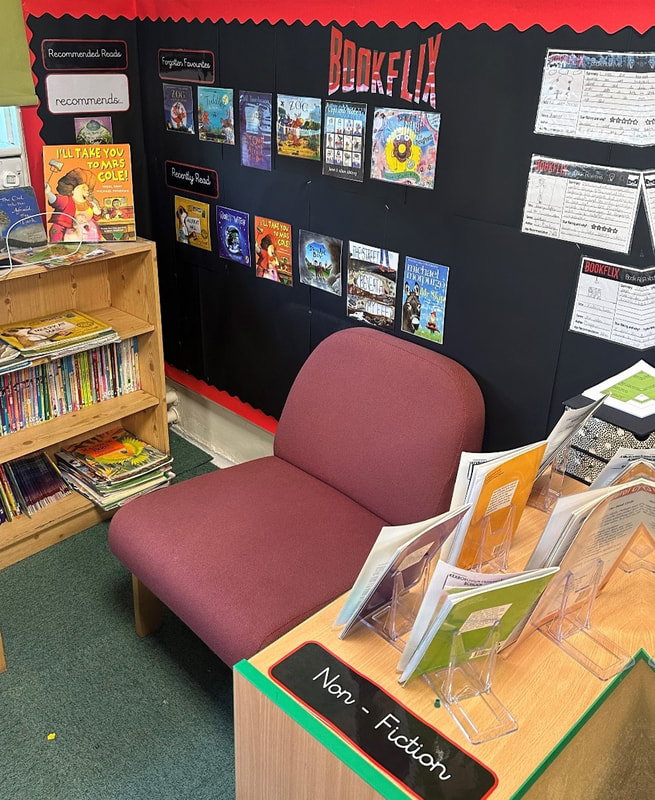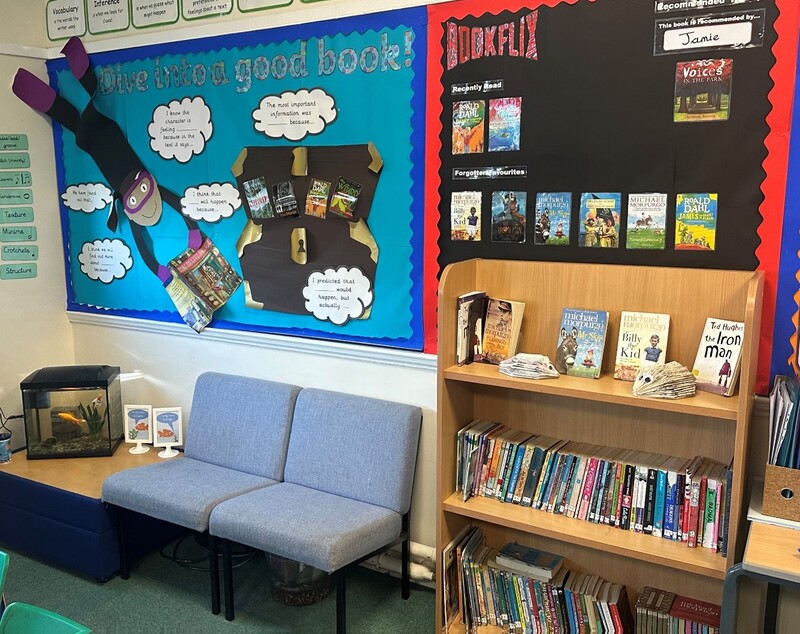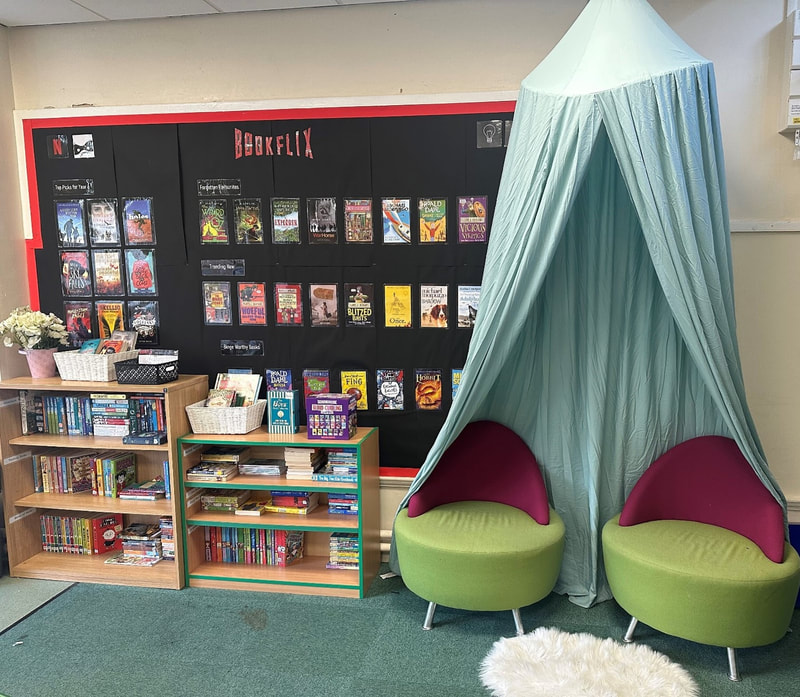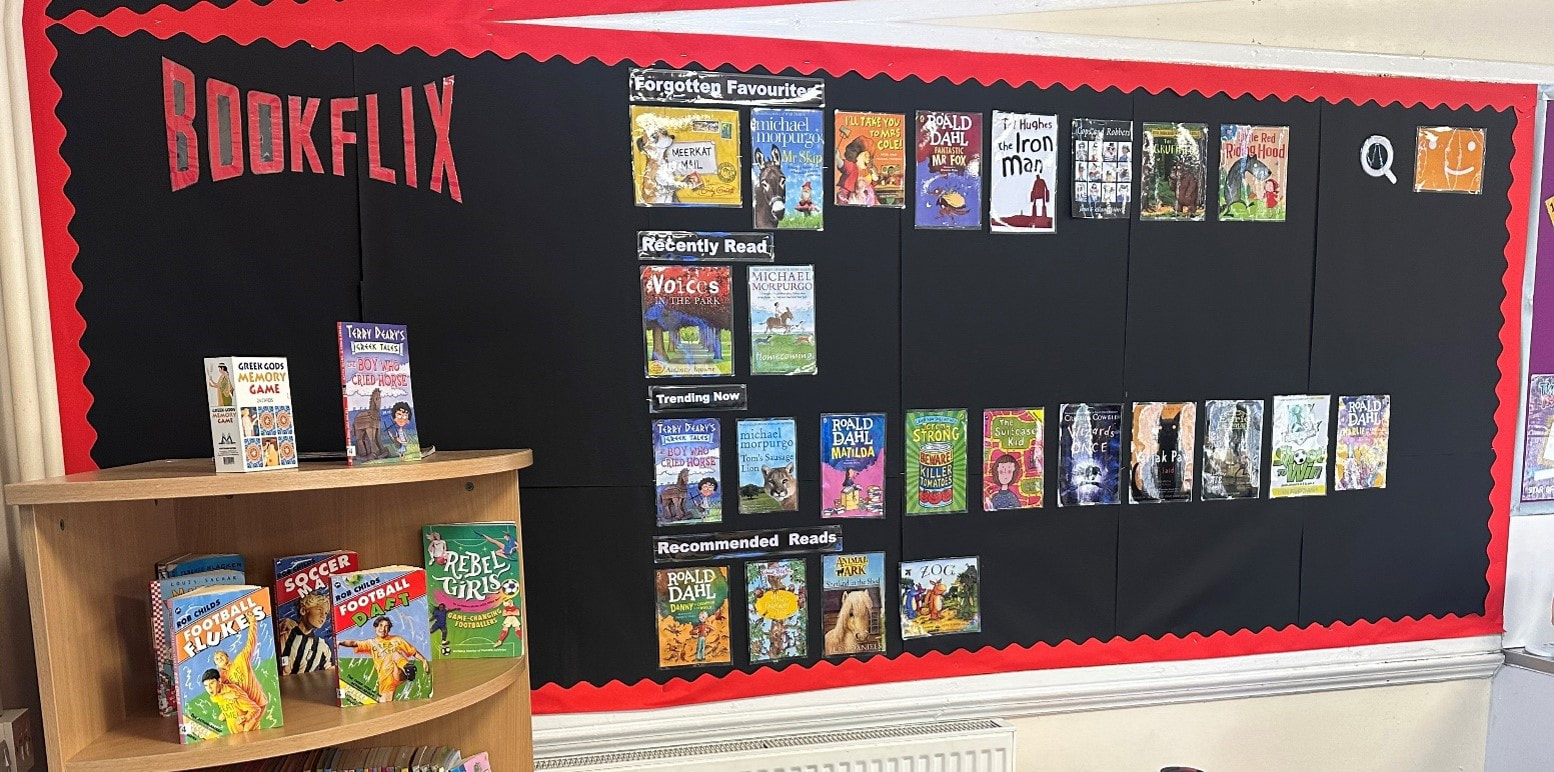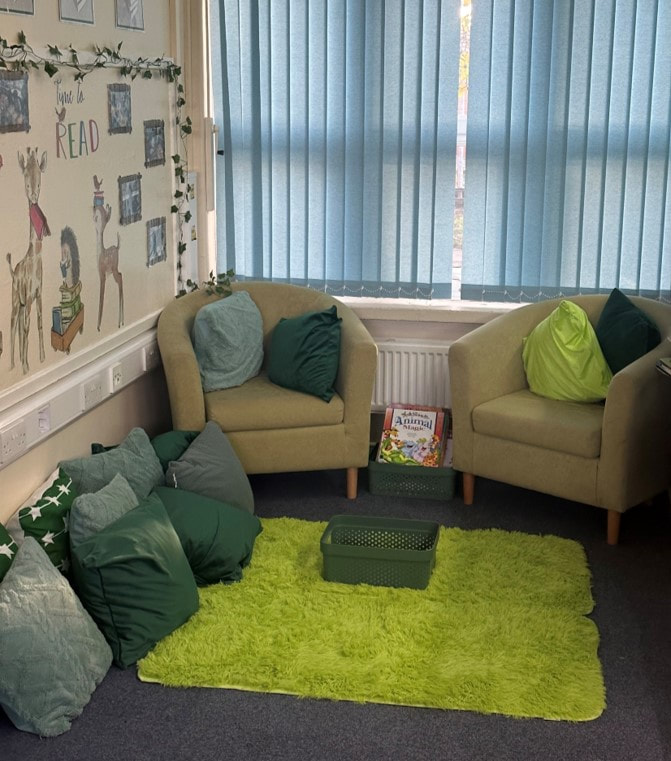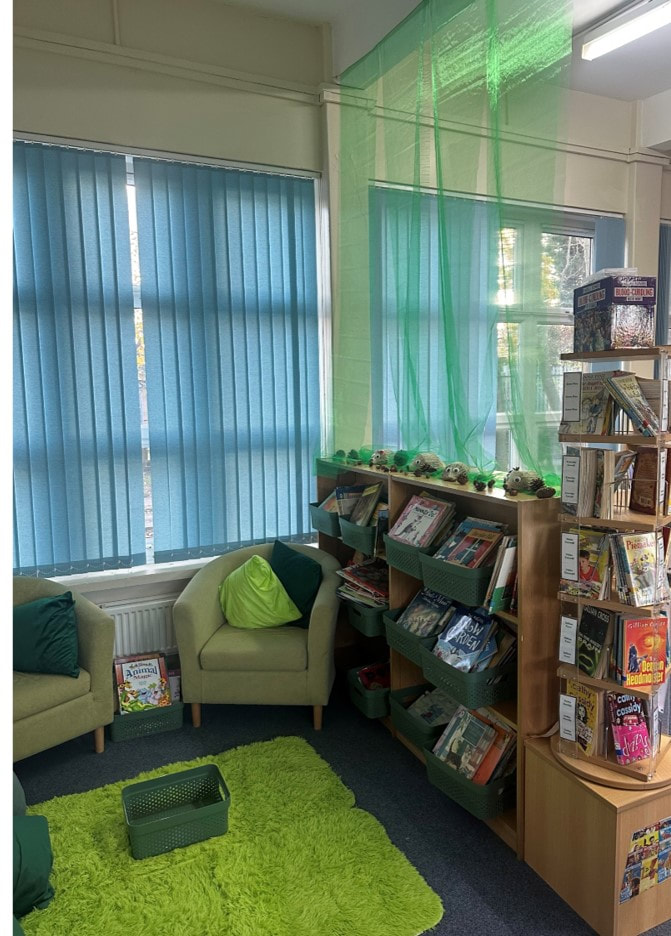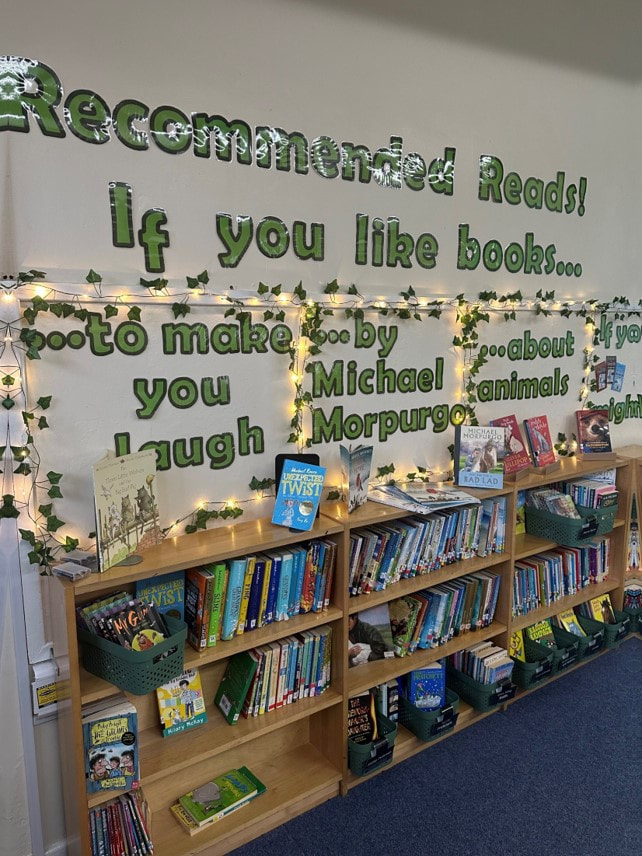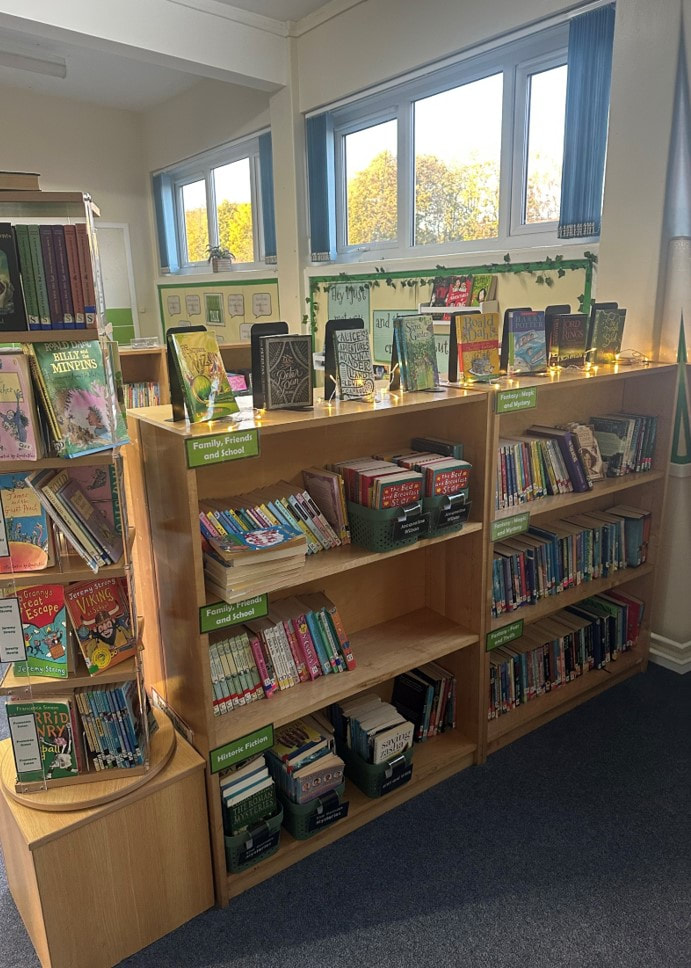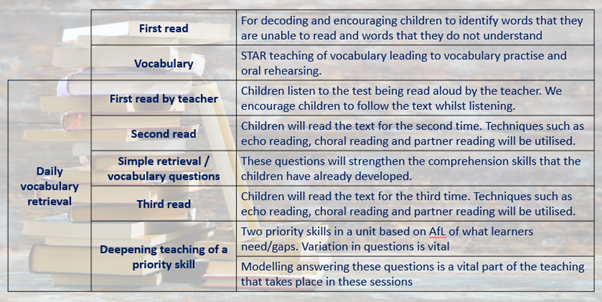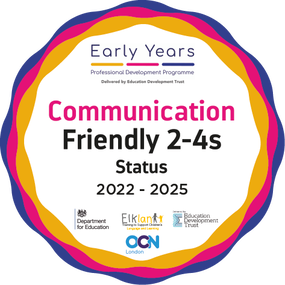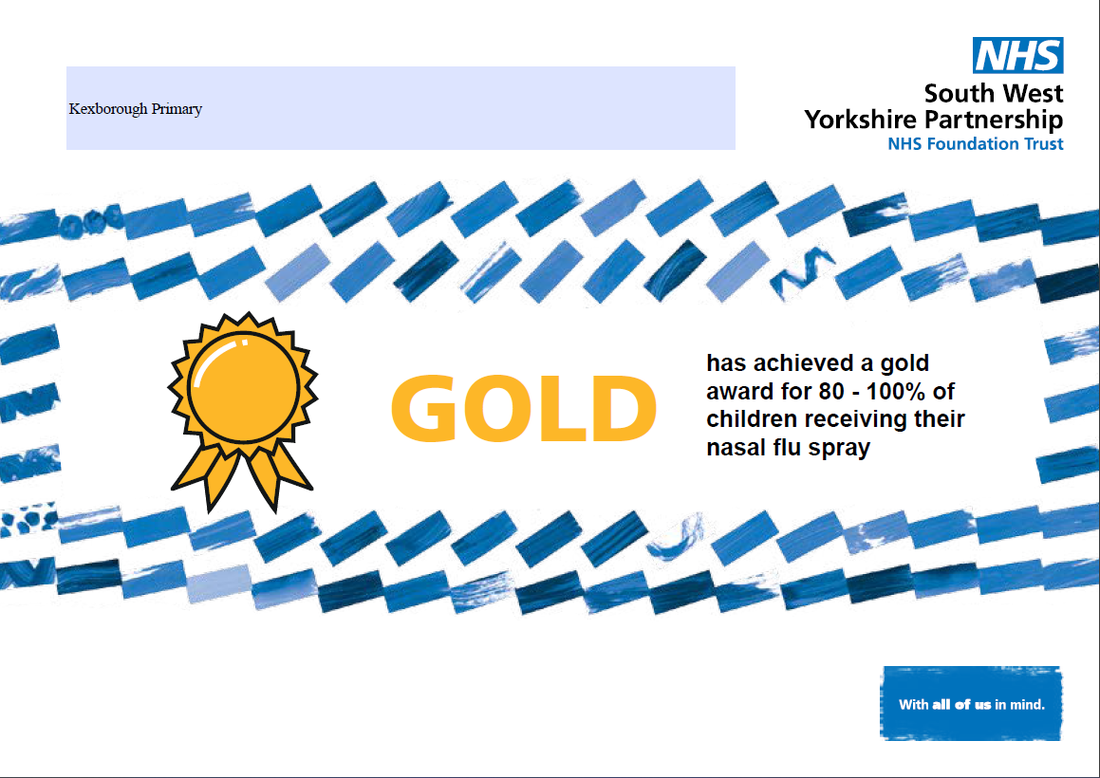READING
At Kexborough Primary School, reading lies at the very heart of our curriculum as we believe that the ability to read and understand unlocks a real love of learning for children. Our pupils are encouraged to read for pleasure and to read widely.
High quality texts have been chosen by class teachers so that their own passion and enthusiasm for reading is then embraced by our pupils. Teachers read aloud to pupils every day, ensuring that they are exposed to a variety of genres, encouraging the love of reading on a daily basis. These texts offer a clear progression of challenge throughout school, helping to build on our reading curriculum’s prior knowledge and skills
These texts offer a clear progression of challenge throughout school, helping to build on our reading curriculum’s prior knowledge and skills. Texts are age-appropriate and have been chosen because of the rich vocabulary they contain and the cross-curricular opportunities they offer.
Children are exposed to whole class daily reading sessions, where pupils are given the opportunity to delve deeper into texts, focusing on reading strands and objectives taken from the National Curriculum. This provides pupils opportunities to develop comprehension skills. Pupils are heard reading age-related texts aloud on a daily basis, where they are given opportunities to discuss texts in depth, collaboratively.
Each classroom has an inviting reading area where children can explore a range of carefully chosen books..
At Kexborough Primary School, reading lies at the very heart of our curriculum as we believe that the ability to read and understand unlocks a real love of learning for children. Our pupils are encouraged to read for pleasure and to read widely.
High quality texts have been chosen by class teachers so that their own passion and enthusiasm for reading is then embraced by our pupils. Teachers read aloud to pupils every day, ensuring that they are exposed to a variety of genres, encouraging the love of reading on a daily basis. These texts offer a clear progression of challenge throughout school, helping to build on our reading curriculum’s prior knowledge and skills
These texts offer a clear progression of challenge throughout school, helping to build on our reading curriculum’s prior knowledge and skills. Texts are age-appropriate and have been chosen because of the rich vocabulary they contain and the cross-curricular opportunities they offer.
Children are exposed to whole class daily reading sessions, where pupils are given the opportunity to delve deeper into texts, focusing on reading strands and objectives taken from the National Curriculum. This provides pupils opportunities to develop comprehension skills. Pupils are heard reading age-related texts aloud on a daily basis, where they are given opportunities to discuss texts in depth, collaboratively.
Each classroom has an inviting reading area where children can explore a range of carefully chosen books..
…as well as access to our own library on site, where they can read and loan a range of fiction and non-fiction texts.
ENGLISH CURRICULUM: PHONICS READING
The Teaching of Phonics
At Kexborough Primary School we use a synthetic phonics programme called ‘Read Write Inc’ produced by Ruth Miskin. Read Write Inc is a method of learning centred around letter sounds and phonics, blending them together to read and write words and using these learnt sounds in their reading and writing. Children are assessed for the Read Write Inc programme from FS2. Whilst accessing Read Write Inc, children will follow a daily phonic programme to create fluent and enthusiastic readers.
The five key principles that underpin all the teaching in all Read Write Inc. Programmes are:
When using RWI to read the children will:
This video gives information about phonics and why the need for a systematic approach.
This video explains pure sounds and gives a demonstration of how these are said.
Phonics Check
Phonics Screening Check
The national phonics screening check is a statutory assessment that was introduced in 2012 to all Year 1 pupils and is a quick and easy check of pupils’ phonics knowledge.
Who is it for?
All Year 1 pupils take the phonics screening check during June. Year 2 pupils who didn’t pass the phonics screening check when they were in Year 1 are given another opportunity to take it in Year 2.
What is in the screening check?
The check comprises of a list of 40 words and nonsense words. It assesses phonics skills and knowledge learnt in reception and Year 1. Pupils read one-to-one with the class teacher and they are asked to sound out a word and blend the sounds together. The check is very similar to the tasks the pupils complete during phonics lessons. In total, the check lasts approximately 10 minutes.
What are nonsense words and why are they used?
These are words that are phonetically decodable but are not actual words with an associated meaning e.g. brip, snorb. They are used in the check to assess whether pupils can decode a word using phonic skills and not their memory. The nonsense words are shown to pupils alongside a picture of an alien and they are asked what the alien’s name is – this helps to provide a context for the nonsense word
Since the introduction of the phonics screening check, children have need to achieve 32 / 40 to show that they have reached the expected standard.
Details from gov.uk can be found by clicking the link below
BEYOND PHONICS
Once children have completed the formal teaching and learning of phonics, children are taught to become fluent readers with increasingly growing comprehension skills. At this point, pedagogy changes to ensure pupils have a deep understanding of comprehension, knowing that the written word carries meaning.
Building Fluency and Comprehension Reading Pedagogy
Children take part in a daily-reading session which follows a structured cycle. Teacher’s select a text or extract that will immerse the pupils in selected genres using their core text and the accompanying linked text list.
The purpose of this reading phase is to:
• expose pupils to a wider range of vocabulary and language in order to understand more texts;
• build reading fluency with age-related texts;
• teach pupils how think at the point of reading
• enable pupils to fully comprehend what they read;
• equip pupils in answering written comprehension questions.
The Teaching of Phonics
At Kexborough Primary School we use a synthetic phonics programme called ‘Read Write Inc’ produced by Ruth Miskin. Read Write Inc is a method of learning centred around letter sounds and phonics, blending them together to read and write words and using these learnt sounds in their reading and writing. Children are assessed for the Read Write Inc programme from FS2. Whilst accessing Read Write Inc, children will follow a daily phonic programme to create fluent and enthusiastic readers.
The five key principles that underpin all the teaching in all Read Write Inc. Programmes are:
- Participation – our teaching strategies ensure that all children participate fully in the whole lesson – there is no chance for children to lose concentration and miss key elements of the teaching
- Praise – children work together, as partners, taking turns to teach and praise one another and they are motivated by the focused praise they receive from teachers and teaching assistants
- Pace – a lively pace keeps all the children fully engaged
- Purpose – teachers know the purpose of every activity and how it leads into the next
- Passion – it is easy for teachers to be passionate about their teaching because they see their children make such rapid progress.
When using RWI to read the children will:
- learn that sounds are represented by written letters
- learn 44 sounds and the corresponding letter/letter groups using simple picture prompts
- learn how to blend sounds and read words using Fred Talk.
- Learn that some tricky words with grotty graphemes can’t be read using Fred Talk – these are Red Words (you can’t Fred a Red)
- read fun and lively stories featuring words they have learned to sound out and show that they comprehend the stories by answering questions and discussing the text
This video gives information about phonics and why the need for a systematic approach.
This video explains pure sounds and gives a demonstration of how these are said.
Phonics Check
Phonics Screening Check
The national phonics screening check is a statutory assessment that was introduced in 2012 to all Year 1 pupils and is a quick and easy check of pupils’ phonics knowledge.
Who is it for?
All Year 1 pupils take the phonics screening check during June. Year 2 pupils who didn’t pass the phonics screening check when they were in Year 1 are given another opportunity to take it in Year 2.
What is in the screening check?
The check comprises of a list of 40 words and nonsense words. It assesses phonics skills and knowledge learnt in reception and Year 1. Pupils read one-to-one with the class teacher and they are asked to sound out a word and blend the sounds together. The check is very similar to the tasks the pupils complete during phonics lessons. In total, the check lasts approximately 10 minutes.
What are nonsense words and why are they used?
These are words that are phonetically decodable but are not actual words with an associated meaning e.g. brip, snorb. They are used in the check to assess whether pupils can decode a word using phonic skills and not their memory. The nonsense words are shown to pupils alongside a picture of an alien and they are asked what the alien’s name is – this helps to provide a context for the nonsense word
Since the introduction of the phonics screening check, children have need to achieve 32 / 40 to show that they have reached the expected standard.
Details from gov.uk can be found by clicking the link below
BEYOND PHONICS
Once children have completed the formal teaching and learning of phonics, children are taught to become fluent readers with increasingly growing comprehension skills. At this point, pedagogy changes to ensure pupils have a deep understanding of comprehension, knowing that the written word carries meaning.
Building Fluency and Comprehension Reading Pedagogy
Children take part in a daily-reading session which follows a structured cycle. Teacher’s select a text or extract that will immerse the pupils in selected genres using their core text and the accompanying linked text list.
The purpose of this reading phase is to:
• expose pupils to a wider range of vocabulary and language in order to understand more texts;
• build reading fluency with age-related texts;
• teach pupils how think at the point of reading
• enable pupils to fully comprehend what they read;
• equip pupils in answering written comprehension questions.

